Dive into our comprehensive guide on 17 flowers that start with D. Explore their names, characteristics and how to cultivate them in your garden for a vibrant and diverse floral display.
Welcome to our garden of delightful flowers that start with D! Whether you’re a seasoned gardener or just starting out, these blooms will add charm and colour to your outdoor space. Let’s explore 17 different flowers, their unique features and how you can grow them. Get ready to discover the beauty of these ‘D’ flowers!
1. Dahlia
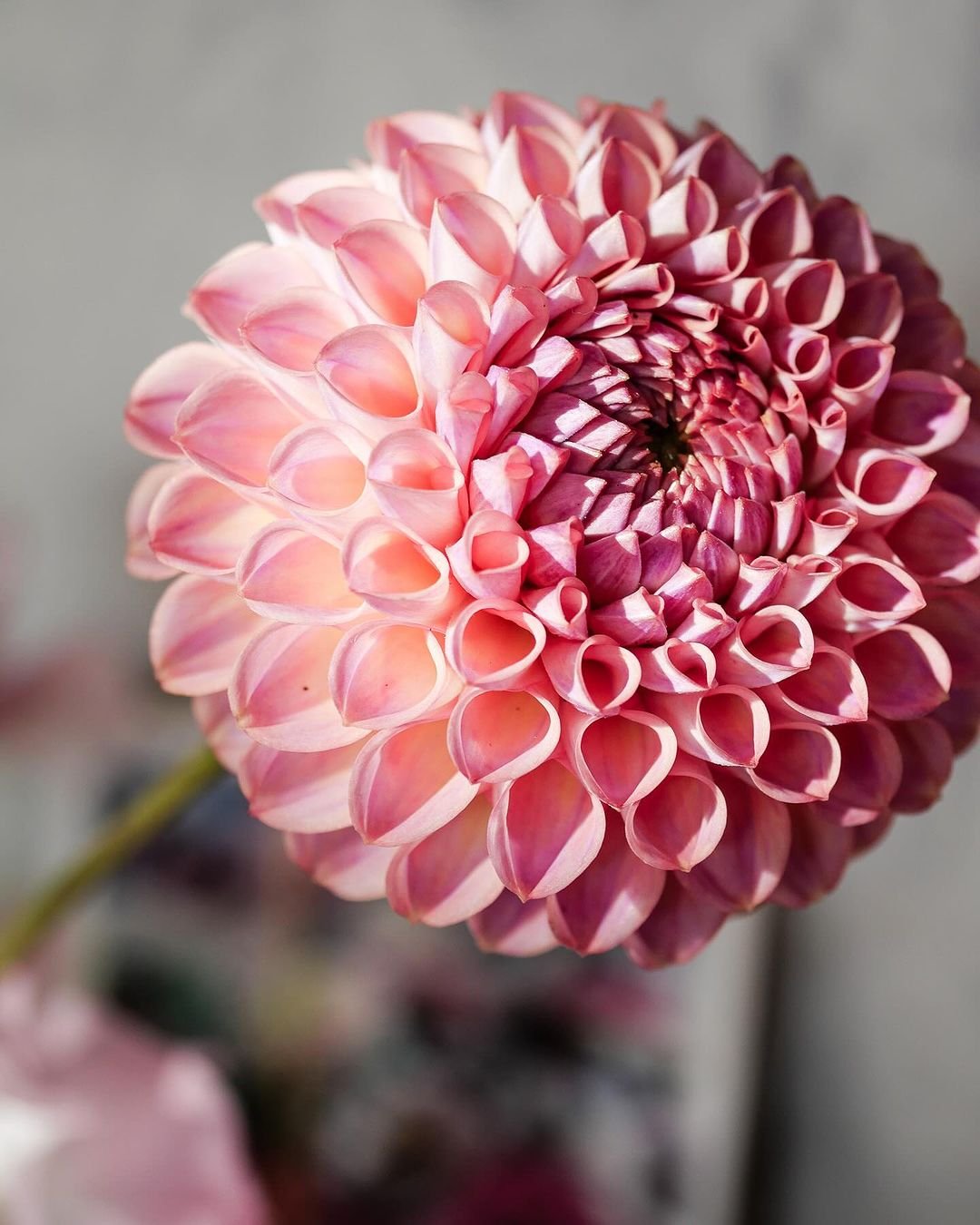
Here’s a chart with information about Dahlias:
| Category | Information |
|---|---|
| Botanical Name | Dahlia spp. |
| Common Name | Dahlia |
| Plant Type | Perennial (tuberous) |
| Hardiness Zone | USDA Zones 8-11 (grown as annuals in cooler zones) |
| Sun Exposure | Full sun |
| Soil Type | Well-draining, fertile soil |
| Watering | Moderate; keep soil consistently moist |
| Growth Habit | Upright, bushy |
| Height/Spread | Varies widely (1-6 feet tall, 1-3 feet wide) |
| Special Features | Showy, large flowers in a variety of colors and forms, long blooming period, excellent for cut flowers, attract pollinators, tubers can be stored over winter in cooler climates |
Dahlias are stunning flowers with large, showy blooms. They come in almost every colour except blue. Dahlias can be small or big, with some flowers reaching dinner plate size!
How to grow:
- Plant in full sun
- Water deeply once a week
- Stake tall varieties for support
Dahlias bloom from midsummer to fall, giving your garden long-lasting colour. Learn more about growing dahlias from the American Dahlia Society.
2. Daffodil

Here’s a chart with information about Daffodils:
| Category | Information |
|---|---|
| Botanical Name | Narcissus spp. |
| Common Name | Daffodil |
| Plant Type | Perennial (bulb) |
| Hardiness Zone | USDA Zones 3-8 |
| Sun Exposure | Full sun to partial shade |
| Soil Type | Well-draining, moderately fertile |
| Watering | Moderate; keep soil moist during the growing season |
| Growth Habit | Upright |
| Height/Spread | 6-24 inches tall, 6-12 inches wide |
| Special Features | Bright, trumpet-shaped flowers in shades of yellow, white, orange and pink; early spring bloom; deer and rodent resistant; naturalizes easily; toxic if ingested |
Daffodils are cheerful spring flowers with trumpet-shaped centers. They’re usually yellow or white, but some varieties have orange or pink parts too.
How to grow:
- Plant bulbs in fall
- Choose a spot with full sun or partial shade
- Don’t cut the leaves after blooming – they feed the bulb for next year
Daffodils are great for naturalising in lawns or wooded areas. They come back year after year with little care.
3. Daisy
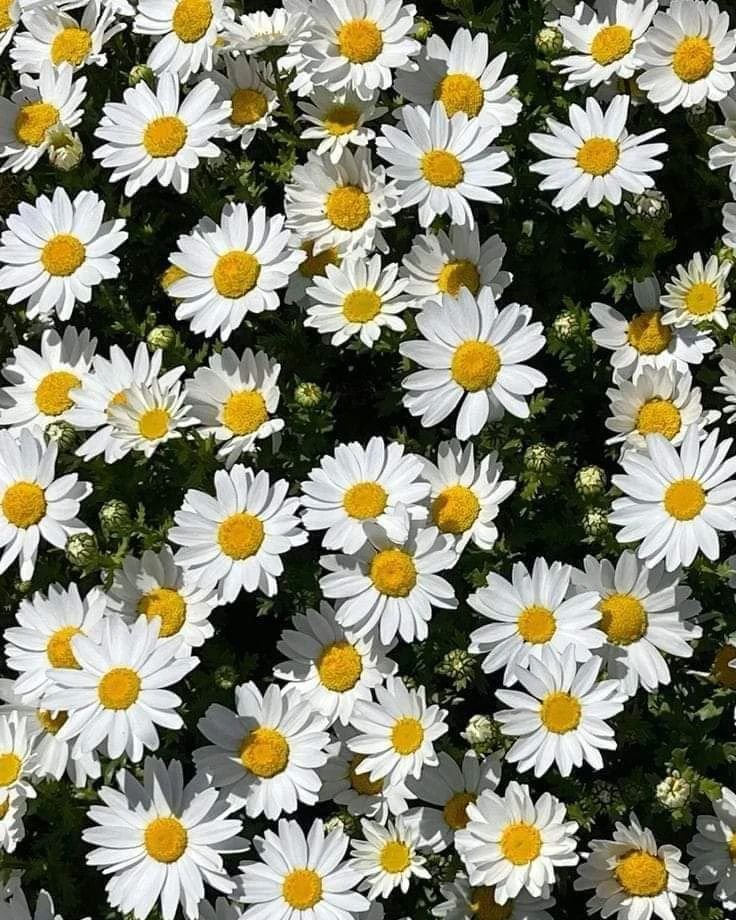
Here’s a chart with information about Daisies:
| Category | Information |
|---|---|
| Botanical Name | Bellis perennis (Common Daisy), Leucanthemum vulgare (Oxeye Daisy) |
| Common Name | Daisy |
| Plant Type | Perennial |
| Hardiness Zone | USDA Zones 4-8 (varies with species) |
| Sun Exposure | Full sun to partial shade |
| Soil Type | Well-draining, moderately fertile |
| Watering | Moderate; keep soil evenly moist |
| Growth Habit | Clumping, spreading |
| Height/Spread | 6-24 inches tall, 6-12 inches wide |
Daisies are simple, charming flowers with white petals and yellow centers. They bloom for a long time and are easy to grow.
How to grow:
- Plant in full sun
- Water regularly, but don’t overwater
- Divide plants every few years to keep them healthy
Daisies attract butterflies and make great cut flowers. They’re perfect for cottage gardens or wildflower meadows.
4. Delphinium
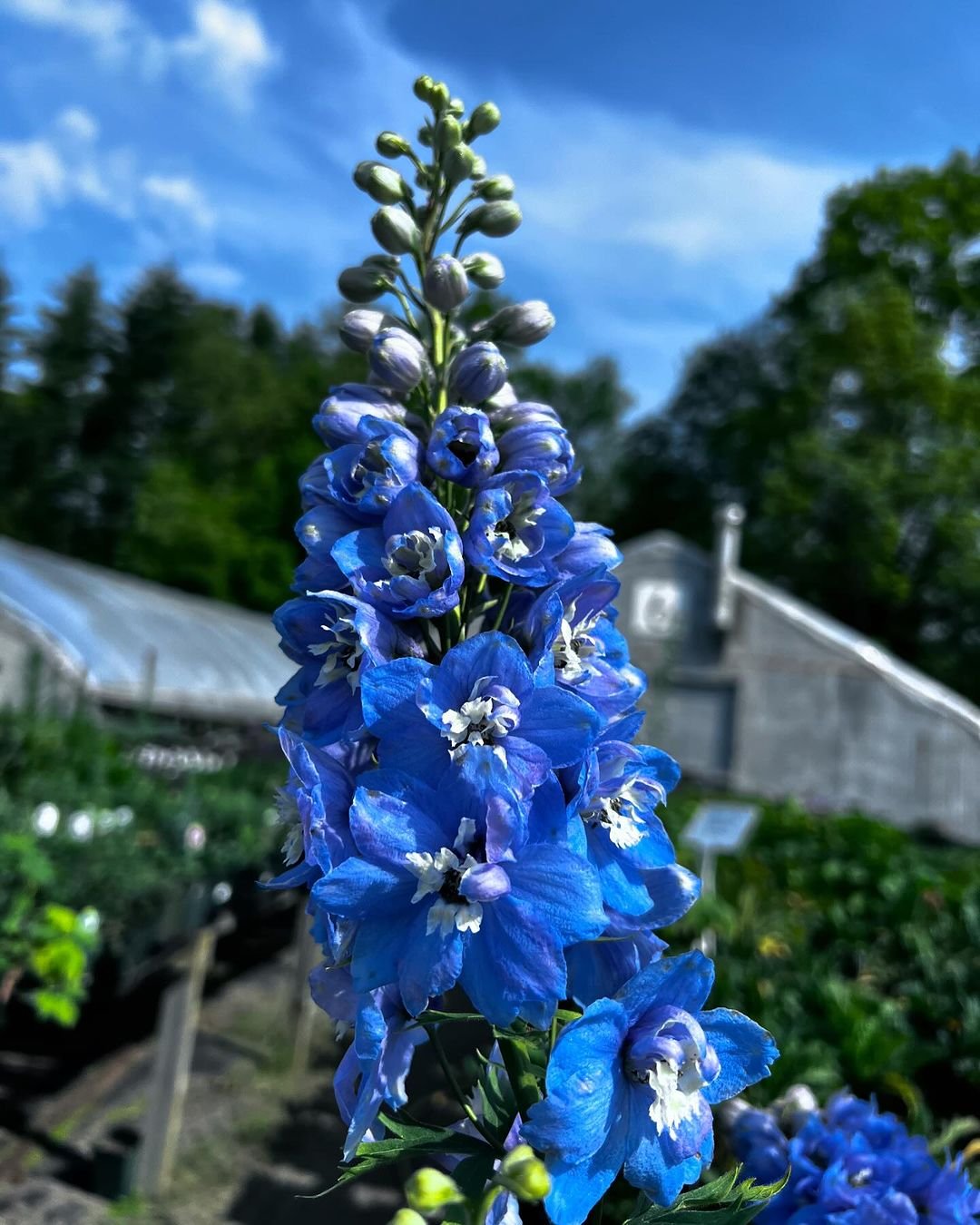
Here’s a chart with information about Delphiniums:
| Category | Information |
|---|---|
| Botanical Name | Delphinium spp. |
| Common Name | Delphinium |
| Plant Type | Perennial |
| Hardiness Zone | USDA Zones 3-7 |
| Sun Exposure | Full sun to partial shade |
| Soil Type | Well-draining, rich, moist soil |
| Watering | Moderate; keep soil consistently moist |
| Growth Habit | Upright, tall spikes |
| Height/Spread | 2-6 feet tall, 1-2 feet wide |
| Special Features | Tall spikes of vibrant blue, purple, pink or white flowers, attracts pollinators, long blooming period, requires staking in windy areas, toxic if ingested |
Delphiniums are tall flowers with spikes of blue, purple or white blooms. They add height and drama to any garden.
How to grow:
- Plant in full sun
- Provide shelter from strong winds
- Stake plants to support the tall flower spikes
Delphiniums are favourites in cottage gardens. They need a bit more care than some flowers, but their beauty is worth it. Find growing tips from North Carolina State Extension.
5. Dianthus
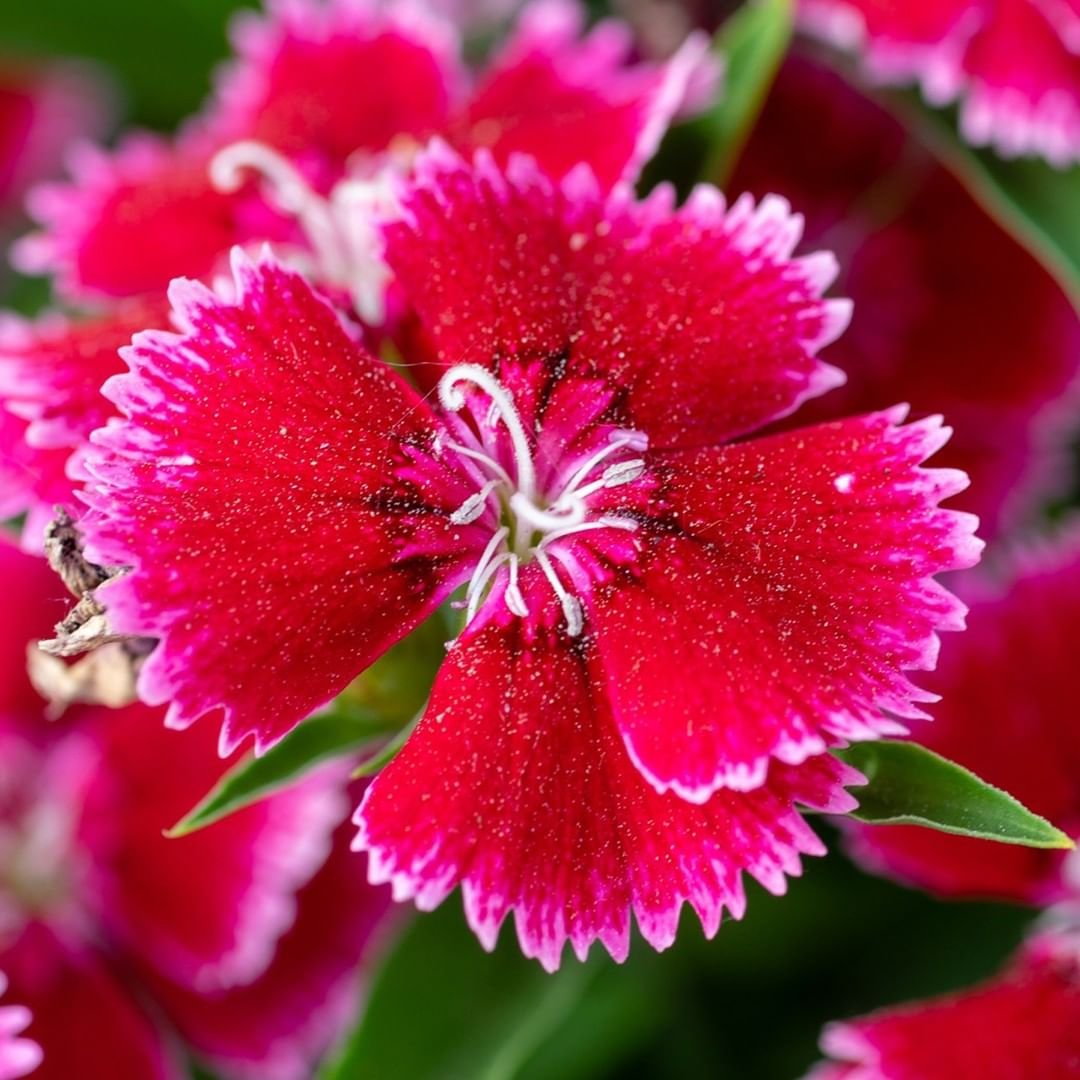
Here’s a chart with information about Dianthus:
| Category | Information |
|---|---|
| Botanical Name | Dianthus spp. |
| Common Name | Dianthus, Carnation, Sweet William, Pinks |
| Plant Type | Perennial, biennial, or annual |
| Hardiness Zone | USDA Zones 3-9 (varies with species) |
| Sun Exposure | Full sun to partial shade |
| Soil Type | Well-draining, slightly alkaline soil |
| Watering | Moderate; allow soil to dry slightly between waterings |
| Growth Habit | Upright, mounding, or spreading |
| Height/Spread | 6-24 inches tall, 6-18 inches wide |
| Special Features | Fragrant, clove-scented flowers, diverse colors, fringed petals, long blooming period, attracts pollinators, deer resistant, excellent for borders and containers |
Dianthus flowers, also called pinks, have fringed petals and a spicy fragrance. They come in shades of pink, red, and white.
How to grow:
- Plant in full sun
- Use well-draining soil
- Trim after flowering to encourage more blooms
Dianthus are great for rock gardens or as edging plants. Some types are carnations, which are popular for cut flowers.
6. Daylily
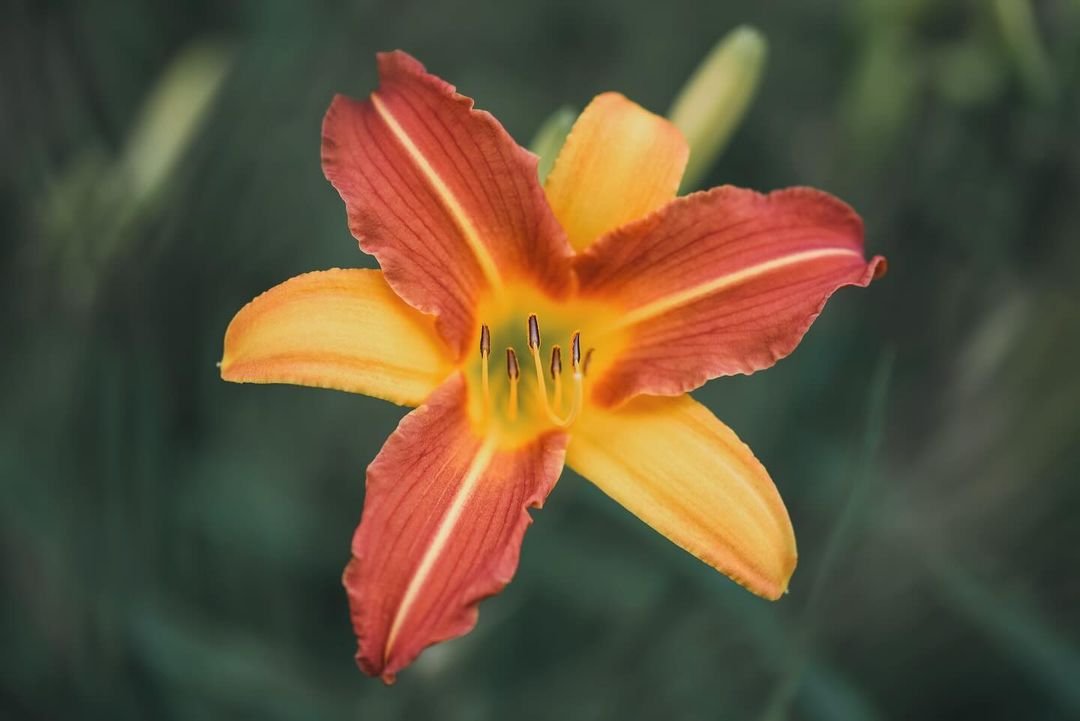
Here’s a chart with information about Daylilies:
| Category | Information |
|---|---|
| Botanical Name | Hemerocallis spp. |
| Common Name | Daylily |
| Plant Type | Perennial |
| Hardiness Zone | USDA Zones 3-9 |
| Sun Exposure | Full sun to partial shade |
| Soil Type | Well-draining, fertile soil |
| Watering | Moderate; keep soil moist, but not waterlogged |
| Growth Habit | Clumping, spreading |
| Height/Spread | 1-4 feet tall, 1-3 feet wide |
| Special Features | Showy, trumpet-shaped flowers in various colors, each bloom lasts one day, long blooming period, low maintenance, attracts pollinators, drought tolerant once established, suitable for borders and mass plantings |
Daylilies are tough, easy-to-grow flowers. Each bloom lasts only a day, but plants produce many flowers over a long season.
How to grow:
- Plant in full sun or light shade
- Water deeply once a week
- Divide clumps every few years
Daylilies come in many colours and can thrive in different soils. They’re great for beginners. Learn more from Clemson Cooperative Extension.
7. Dahlia (Dwarf)
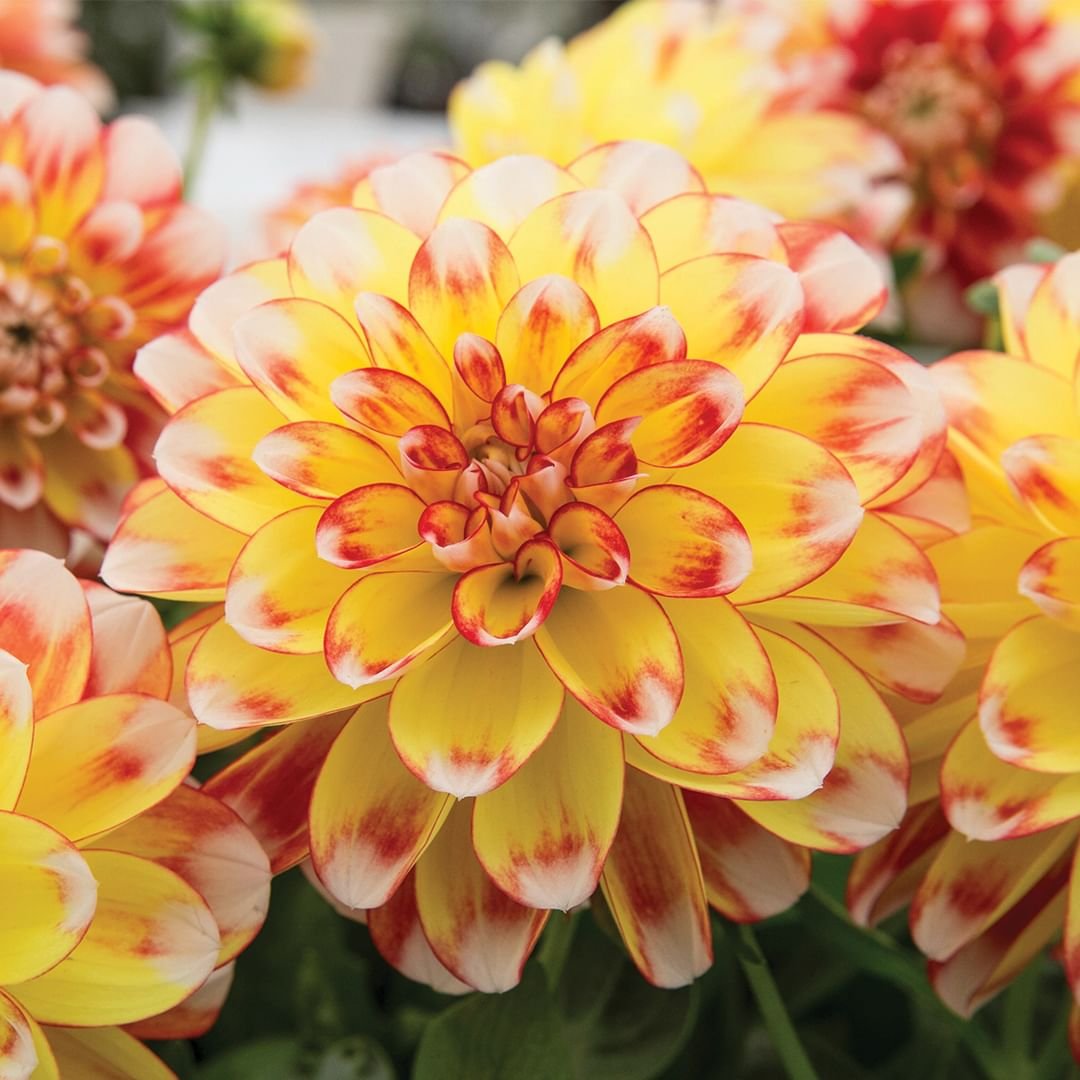
Here’s a chart with information about Dwarf Dahlias:
| Category | Information |
|---|---|
| Botanical Name | Dahlia spp. (Dwarf varieties) |
| Common Name | Dwarf Dahlia |
| Plant Type | Perennial (tuberous), often grown as annual |
| Hardiness Zone | USDA Zones 8-11 (grown as annuals in cooler zones) |
| Sun Exposure | Full sun |
| Soil Type | Well-draining, fertile soil |
| Watering | Moderate; keep soil consistently moist |
| Growth Habit | Compact, bushy |
| Height/Spread | 12-20 inches tall, 12-18 inches wide |
| Special Features | Showy, colorful flowers in various forms, long blooming period, excellent for borders, containers, and small gardens, attracts pollinators, tubers can be stored over winter in cooler climates |
Dwarf dahlias are smaller versions of their taller cousins. They have the same colorful, showy flowers but on more compact plants.
How to grow:
- Plant in full sun
- Water regularly
- Deadhead spent blooms to encourage more flowers
Dwarf dahlias are perfect for containers or small gardens. They bloom all summer long with proper care.
8. Dame’s Rocket
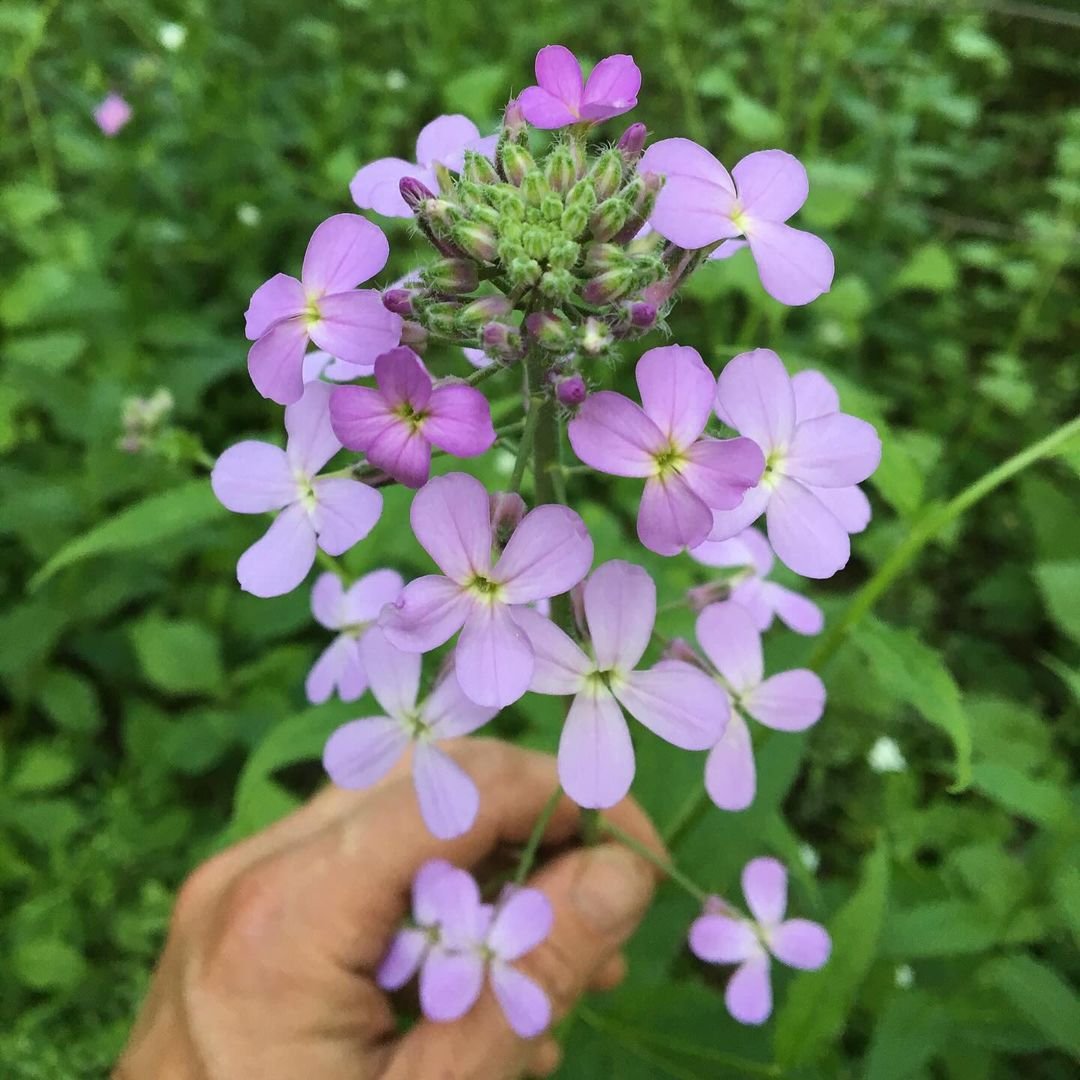
Here’s a chart with information about Dame’s Rocket:
| Category | Information |
|---|---|
| Botanical Name | Hesperis matronalis |
| Common Name | Dame’s Rocket |
| Plant Type | Biennial or short-lived perennial |
| Hardiness Zone | USDA Zones 3-8 |
| Sun Exposure | Full sun to partial shade |
| Soil Type | Well-draining, fertile soil |
| Watering | Moderate |
| Growth Habit | Upright, branching |
| Height/Spread | 2-4 feet tall, 1-2 feet wide |
| Special Features | Fragrant, four-petaled flowers in shades of purple, pink, and white; blooms in late spring to early summer; attracts pollinators; can be invasive in some areas; reseeds readily |
Dame’s Rocket has fragrant, four-petaled flowers in shades of purple, pink or white. It blooms in late spring to early summer.
How to grow:
- Plant in full sun or partial shade
- Tolerates most soil types
- Can self-seed, so remove spent flowers if you don’t want it to spread
Dame’s Rocket is often found in wildflower mixes. It’s great for cottage gardens but can be invasive in some areas.
9. Desert Rose
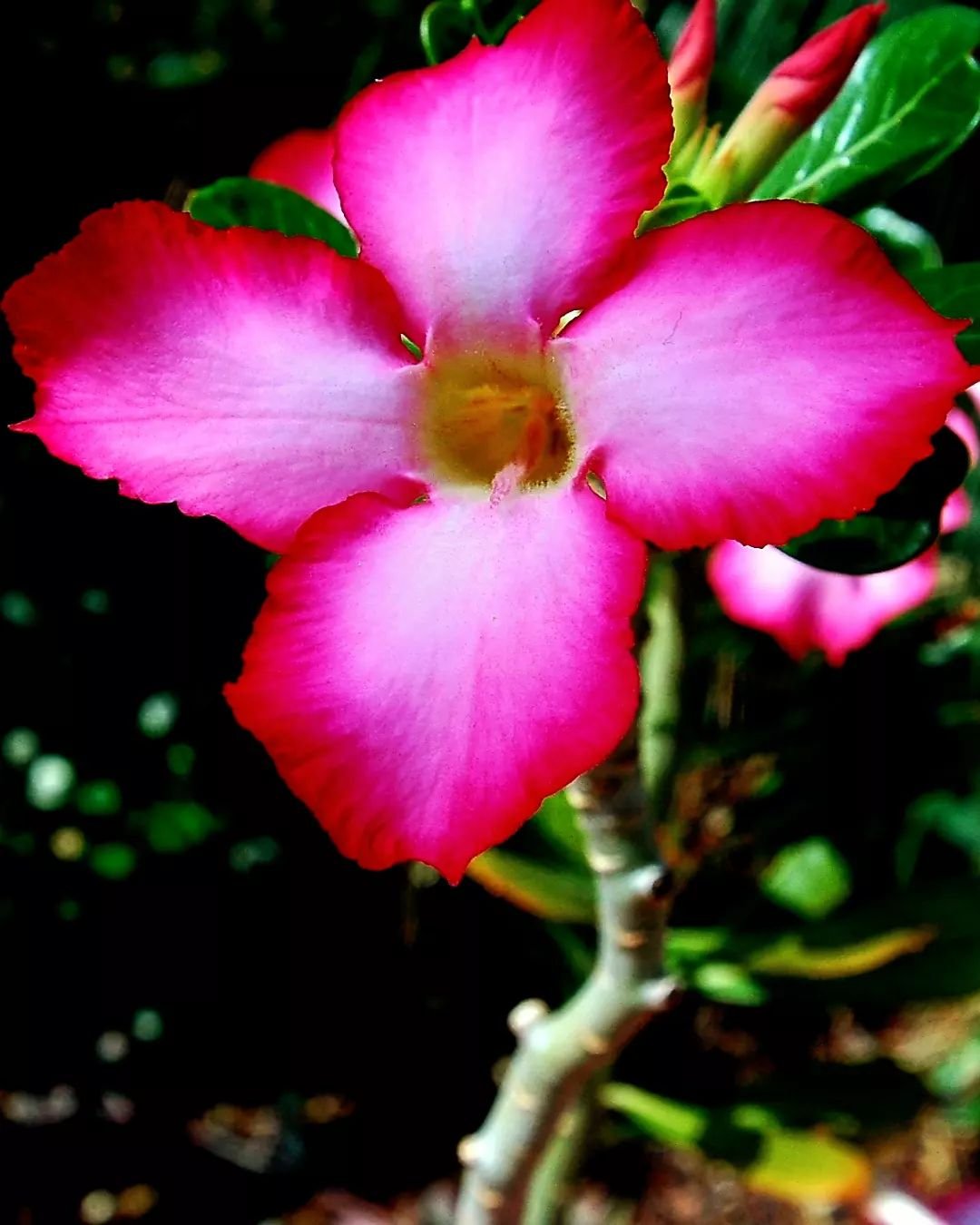
Here’s a chart with information about the Desert Rose:
| Category | Information |
|---|---|
| Botanical Name | Adenium obesum |
| Common Name | Desert Rose |
| Plant Type | Succulent shrub |
| Hardiness Zone | USDA Zones 10-12 |
| Sun Exposure | Full sun |
| Soil Type | Well-draining, sandy or cactus mix |
| Watering | Low; allow soil to dry out between waterings |
| Growth Habit | Upright, thick trunk |
| Height/Spread | 3-5 feet tall, 1-3 feet wide |
| Special Features | Showy, trumpet-shaped flowers in shades of pink, red, and white; swollen trunk (caudex); drought-tolerant; suitable for container growing; toxic if ingested |
Desert Rose is a unique plant with thick stems and bright flowers. It’s not a true rose, but a type of succulent.
How to grow:
- Plant in full sun
- Use very well-draining soil
- Water sparingly – it’s drought-tolerant
Desert Rose is often grown as a houseplant or in containers. It needs protection from cold temperatures.
10. Dogwood

Here’s a chart with information about Dogwood:
| Category | Information |
|---|---|
| Botanical Name | Cornus spp. |
| Common Name | Dogwood |
| Plant Type | Deciduous tree or shrub |
| Hardiness Zone | USDA Zones 3-9 |
| Sun Exposure | Full sun to partial shade |
| Soil Type | Well-draining, fertile, slightly acidic soil |
| Watering | Moderate; prefers consistently moist soil |
| Growth Habit | Upright, spreading |
| Height/Spread | 6-40 feet tall, 6-20 feet wide (varies by species) |
| Special Features | Showy spring flowers (white, pink, red), attractive fall foliage, berries that attract wildlife, some species have striking winter bark, suitable for borders and ornamental gardens |
Dogwood trees are known for their beautiful spring flowers. The “flowers” are actually modified leaves called bracts, usually white or pink.
How to grow:
- Plant in full sun or partial shade
- Use well-draining, slightly acidic soil
- Water deeply and regularly when young
Dogwoods are great landscape trees. They offer spring flowers, summer shade, and fall color. Learn more from Missouri Botanical Garden.
11. Dragon Flower (Snapdragon)
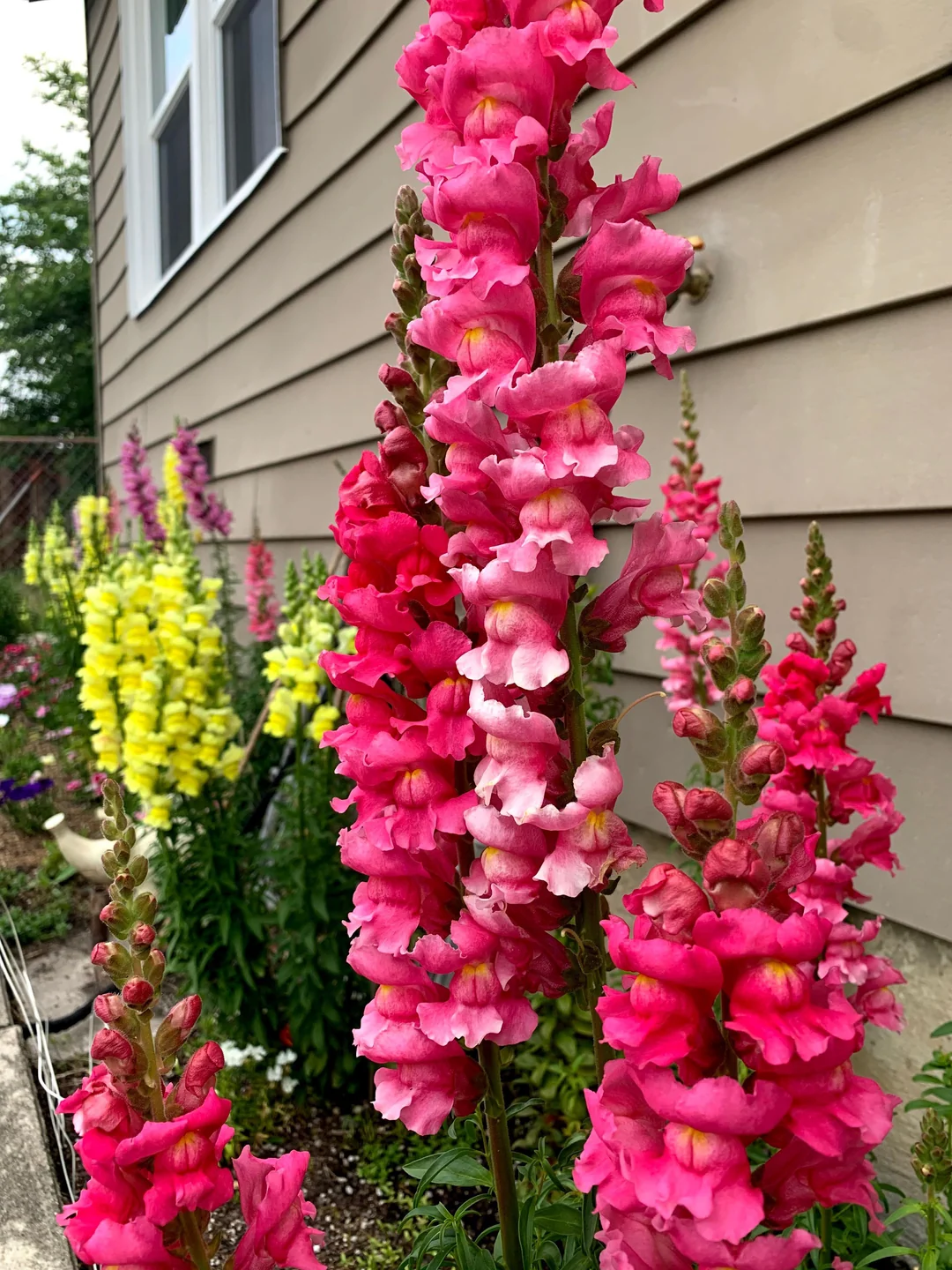
Here’s a chart with information about Snapdragon (Dragon Flower):
| Category | Information |
|---|---|
| Botanical Name | Antirrhinum majus |
| Common Name | Snapdragon, Dragon Flower |
| Plant Type | Annual or perennial (typically grown as annual) |
| Hardiness Zone | USDA Zones 4-11 (depends on variety) |
| Sun Exposure | Full sun to partial shade |
| Soil Type | Well-draining, fertile soil |
| Watering | Moderate; keep soil evenly moist |
| Growth Habit | Upright, clumping |
| Height/Spread | 6 inches to 3 feet tall, depending on variety |
| Special Features | Showy, tubular flowers in various colors (pink, red, yellow, orange, white), attracts pollinators, long blooming period, suitable for borders, containers, and cut flowers |
Dragon flowers, or snapdragons, have unique, mouth-shaped blooms. They come in many colors and are fun for kids to “snap.”
How to grow:
- Plant in full sun
- Water regularly, especially in hot weather
- Pinch back young plants to encourage bushiness
Snapdragons are great for cutting gardens. They bloom for a long time and come back year after year in some climates.
12. Dutchman’s Breeches

Here’s a chart with information about Dutchman’s Breeches:
| Category | Information |
|---|---|
| Botanical Name | Dicentra cucullaria |
| Common Name | Dutchman’s Breeches |
| Plant Type | Perennial |
| Hardiness Zone | USDA Zones 3-7 |
| Sun Exposure | Partial shade to full shade |
| Soil Type | Rich, well-draining soil |
| Watering | Moderate |
| Growth Habit | Low-growing, clumping |
| Height/Spread | 6-12 inches tall, 6-9 inches wide |
| Special Features | Unique, white, pantaloon-shaped flowers resembling upside-down breeches, blooms in early spring, attracts pollinators, deer resistant, suitable for woodland gardens and naturalized areas |
Dutchman’s Breeches are spring wildflowers with white, pantaloon-shaped blooms. They’re native to North American woodlands.
How to grow:
- Plant in partial to full shade
- Use rich, moist soil
- Don’t disturb after planting – they don’t like to be moved
These delicate flowers are great for woodland gardens. They go dormant in summer, so plant them with other shade-loving plants.
13. Dahlia (Dinner Plate)
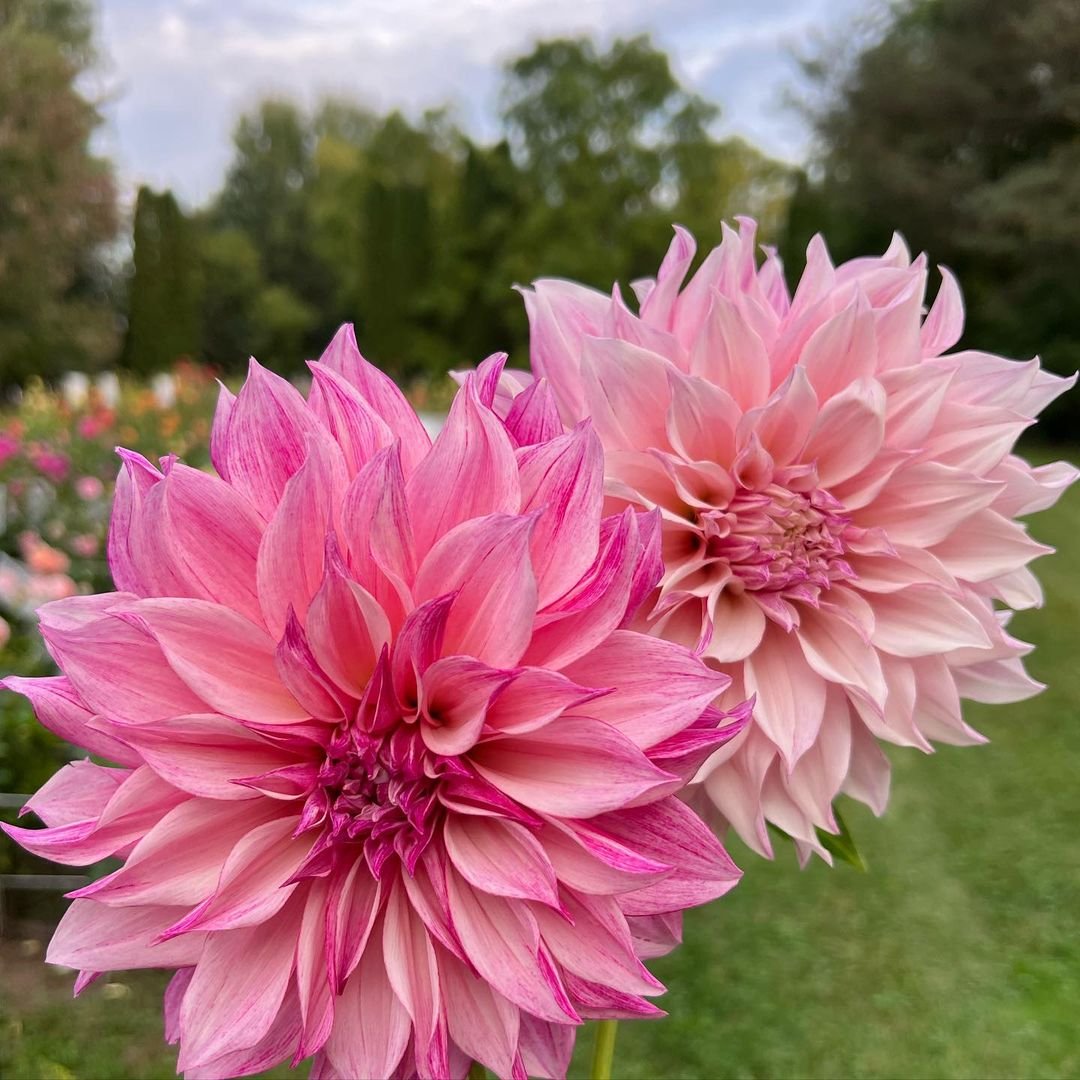
Here’s a chart with information about Dinner Plate Dahlias:
| Category | Information |
|---|---|
| Botanical Name | Dahlia spp. (Dinner Plate varieties) |
| Common Name | Dinner Plate Dahlia |
| Plant Type | Tuberous perennial |
| Hardiness Zone | USDA Zones 8-11 (grown as annuals in cooler zones) |
| Sun Exposure | Full sun |
| Soil Type | Well-draining, fertile soil |
| Watering | Moderate; keep soil consistently moist |
| Growth Habit | Upright, bushy |
| Height/Spread | 3-6 feet tall, 1-2 feet wide |
| Special Features | Very large, showy flowers (up to 12 inches across) in various colors, long blooming period, excellent for cutting, attracts pollinators, tubers can be stored over winter in cooler climates |
Dinner Plate Dahlias are dahlias with extra-large blooms, some up to 10 inches across! They come in many stunning colors.
How to grow:
- Plant in full sun
- Provide rich, well-draining soil
- Stake plants to support the heavy blooms
These dahlias are showstoppers in the garden. They’re also fantastic for cut flower arrangements.
14. Daphne
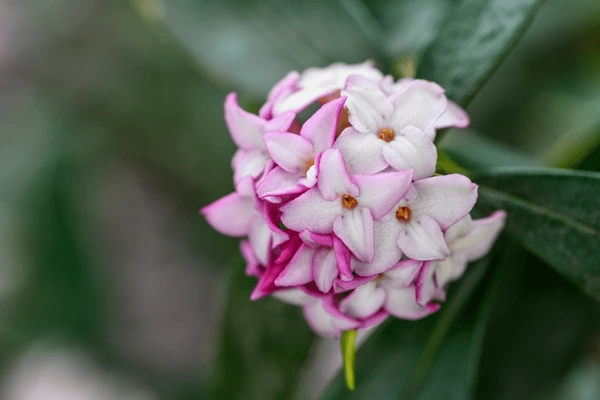
Here’s a chart with information about Daphne:
| Category | Information |
|---|---|
| Botanical Name | Daphne spp. |
| Common Name | Daphne |
| Plant Type | Evergreen or deciduous shrub |
| Hardiness Zone | USDA Zones 4-9 |
| Sun Exposure | Full sun to partial shade |
| Soil Type | Well-draining, fertile soil |
| Watering | Moderate; prefers evenly moist soil |
| Growth Habit | Compact, mounding |
| Height/Spread | 1-4 feet tall, 2-5 feet wide |
| Special Features | Fragrant flowers (white to pink), glossy foliage, toxic if ingested, deer resistant, suitable for borders and woodland gardens |
Daphne is a shrub with small, very fragrant flowers. The blooms are usually pink, white and appear in late winter or early spring.
How to grow:
- Plant in partial shade
- Use well-draining, slightly acidic soil
- Don’t disturb the roots once planted
Daphne is loved for its sweet scent. Plant it near a path or entrance where you can enjoy the fragrance. Learn more from Oregon State University Extension.
15. Devil’s Paintbrush
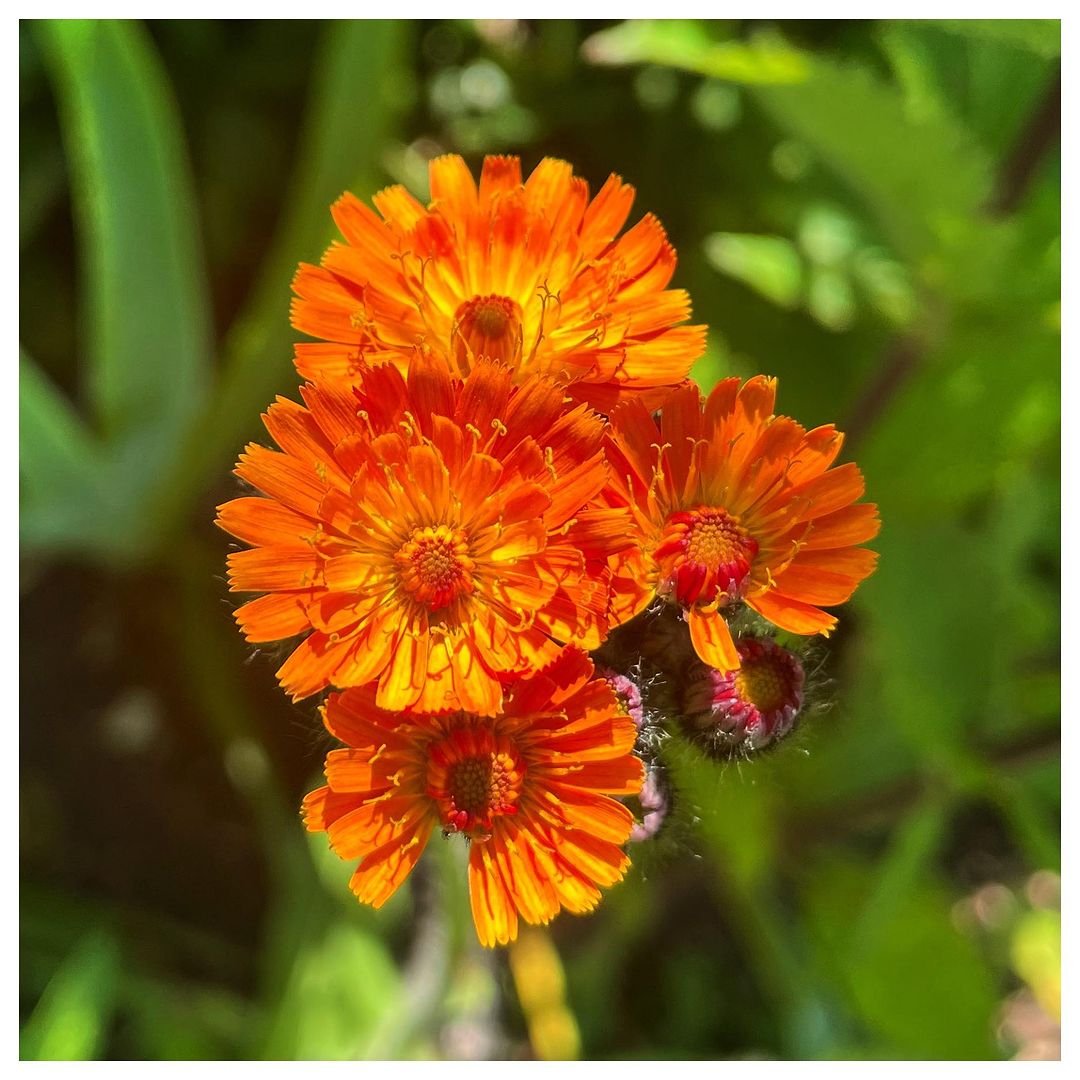
Here’s a chart with the requested information for Devil’s Paintbrush (Hieracium aurantiacum):
| Aspect | Details |
|---|---|
| Botanical Name | Hieracium aurantiacum |
| Common Name | Devil’s Paintbrush, Orange Hawkweed |
| Plant Type | Herbaceous perennial |
| Hardiness Zone | 3-9 |
| Sun Exposure | Full sun to part shade |
| Soil Type | Well-drained, loamy |
| Watering | Moderate |
| Growth Habit | Clumping, spreading |
| Height/Spread | 12-24 inches (30-60 cm) tall, spreads aggressively |
| Special Features | Bright orange flowers in summer, invasive in some regions |
Devil’s Paintbrush, also called Orange Hawkweed, has bright orange flowers on tall stems. It’s a wildflower that can spread quickly.
How to grow:
- Plant in full sun or partial shade
- Tolerates poor soil
- Control spreading by removing spent flowers
This plant is great for wildflower gardens but can be invasive in some areas. Check local guidelines before planting.
16. Diascia
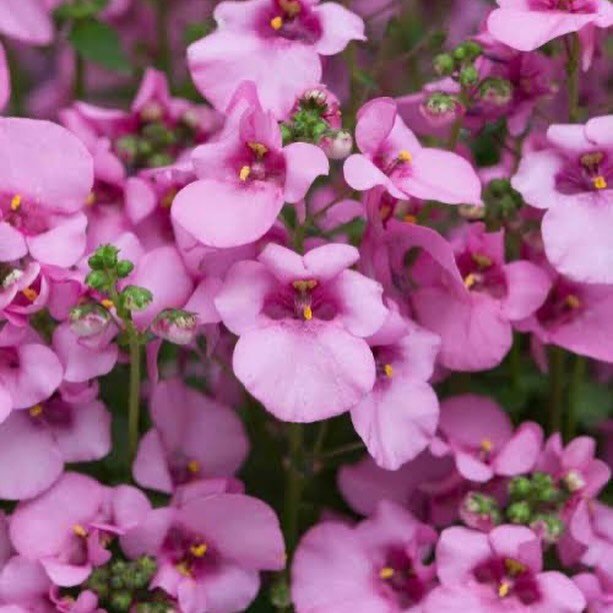
Here’s an overview for Diascia, commonly known as Twinspur:
| Aspect | Details |
|---|---|
| Botanical Name | Diascia spp. |
| Common Name | Twinspur |
| Plant Type | Herbaceous perennial or annual |
| Hardiness Zone | 5-9 (depends on species) |
| Sun Exposure | Full sun to part shade |
| Soil Type | Well-drained, fertile |
| Watering | Regular |
| Growth Habit | Trailing or mounding |
| Height/Spread | 6-12 inches (15-30 cm) tall, spreads 12-18 inches (30-45 cm) |
| Special Features | Profuse bloomer, often used in containers or hanging baskets, flowers in various colors including pink, peach, white |
Diascia or twinspur, has small, delicate flowers in shades of pink, coral or white. It blooms for a long time and is great for hanging baskets.
How to grow:
- Plant in full sun or partial shade
- Use well-draining soil
- Water regularly but don’t overwater
Diascia is a good choice for cool-season color. It attracts bees and butterflies to your garden.
17. Donkey Orchid
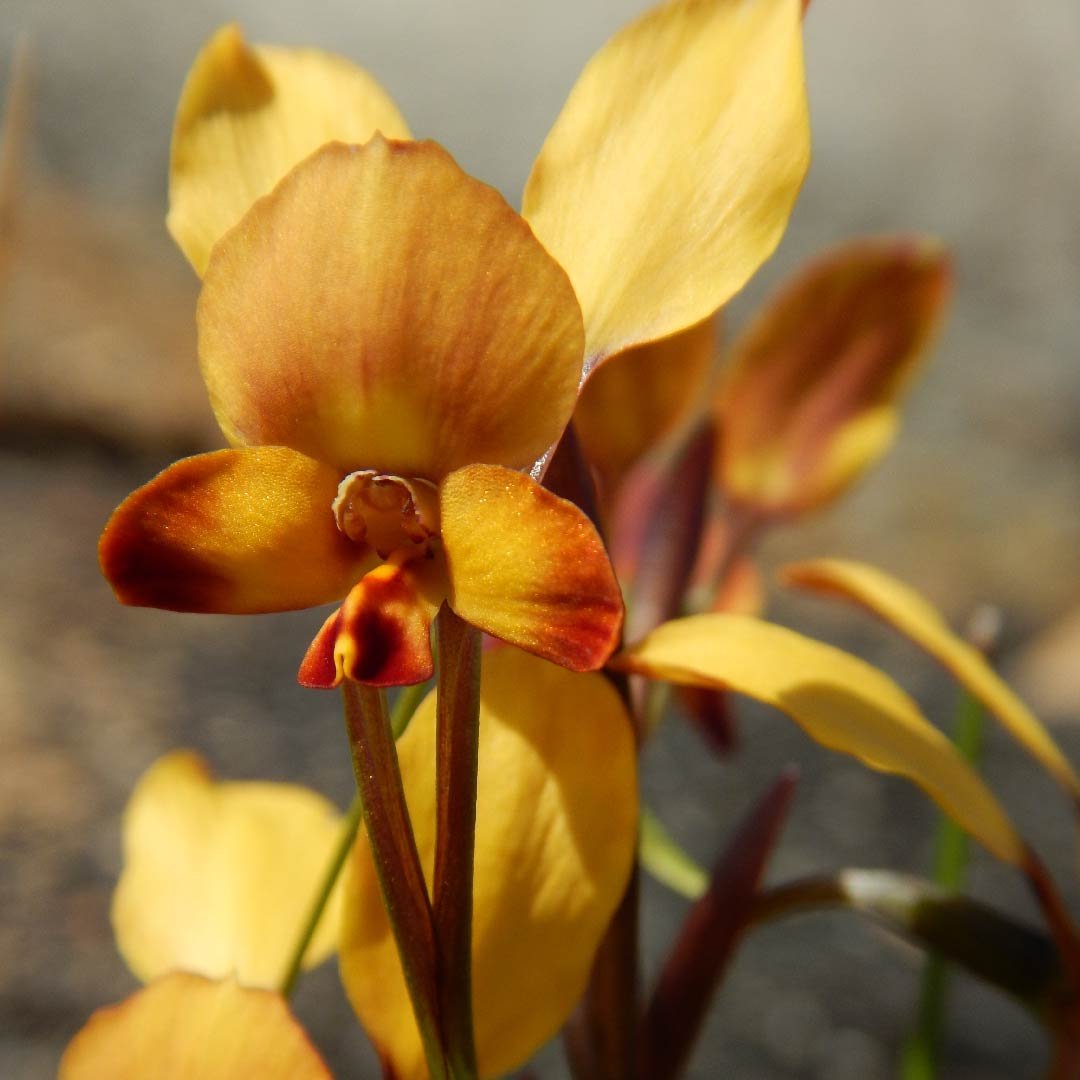
The Donkey Orchid, scientifically known as Diuris species, is a fascinating orchid native to Australia. Here’s an overview:
| Aspect | Details |
|---|---|
| Botanical Name | Diuris spp. |
| Common Name | Donkey Orchid |
| Plant Type | Herbaceous perennial orchid |
| Hardiness Zone | 8-10 (depends on species) |
| Sun Exposure | Full sun to part shade |
| Soil Type | Well-drained, sandy to loamy |
| Watering | Moderate |
| Growth Habit | Clumping, terrestrial |
| Height/Spread | 6-20 inches (15-50 cm) tall, variable spread |
| Special Features | Unique yellow or purple flowers resembling a donkey’s head, blooms in spring to summer, attracts pollinators |
Donkey Orchids are unique flowers with petal “ears” that look like a donkey’s. They’re native to Australia and can be challenging to grow.
How to grow:
- Plant in partial shade
- Use very well-draining soil
- Water sparingly – they’re used to dry conditions
These orchids are for experienced growers. They’re more often admired in the wild than grown in gardens.
Wrapping Up
There you have it – 17 delightful flowers that start with D! From the showy dahlias to the fragrant daphne, these plants offer a wide range of colors, sizes and growing needs. Whether you have a sunny garden, a shady spot or just a few pots on a balcony, there’s a ‘D’ flower for you.
Remember, gardening is about learning and enjoying nature. Don’t be afraid to try new plants. Some might become your favourites! Happy gardening and enjoy your beautiful ‘D’ flowers!








Leave a Reply